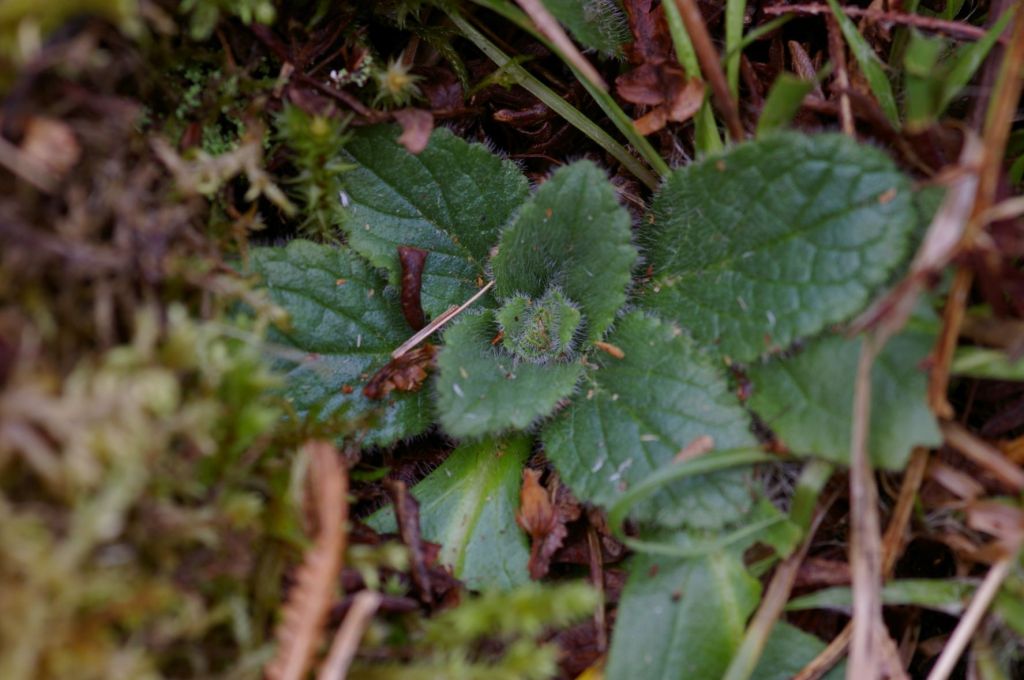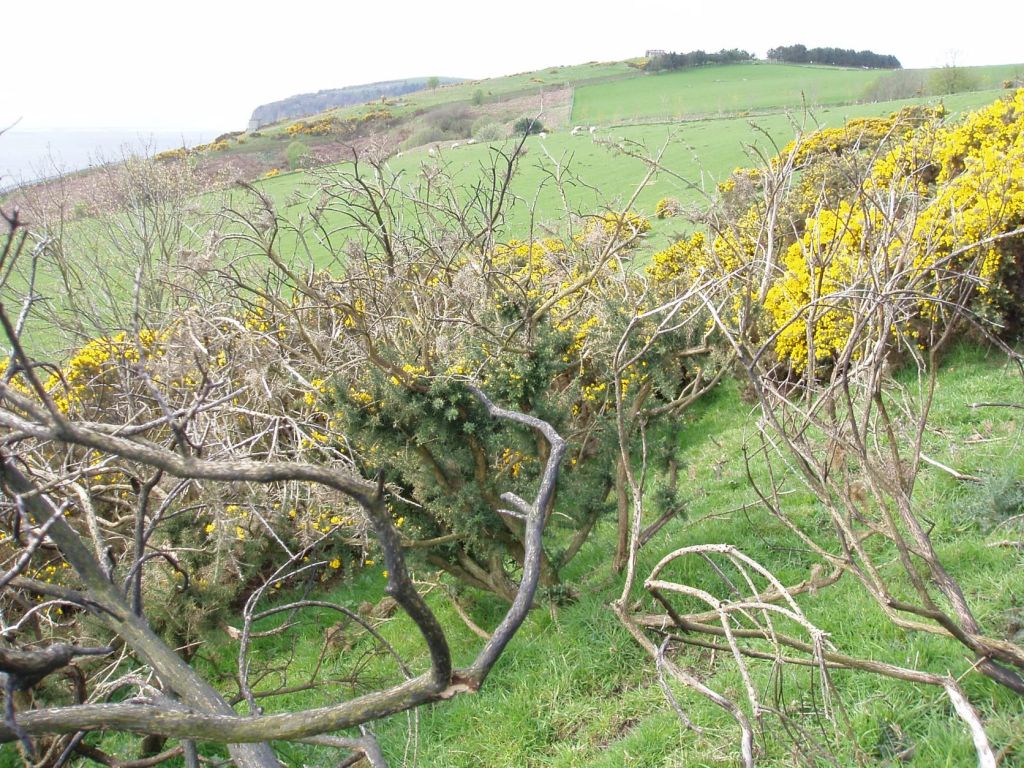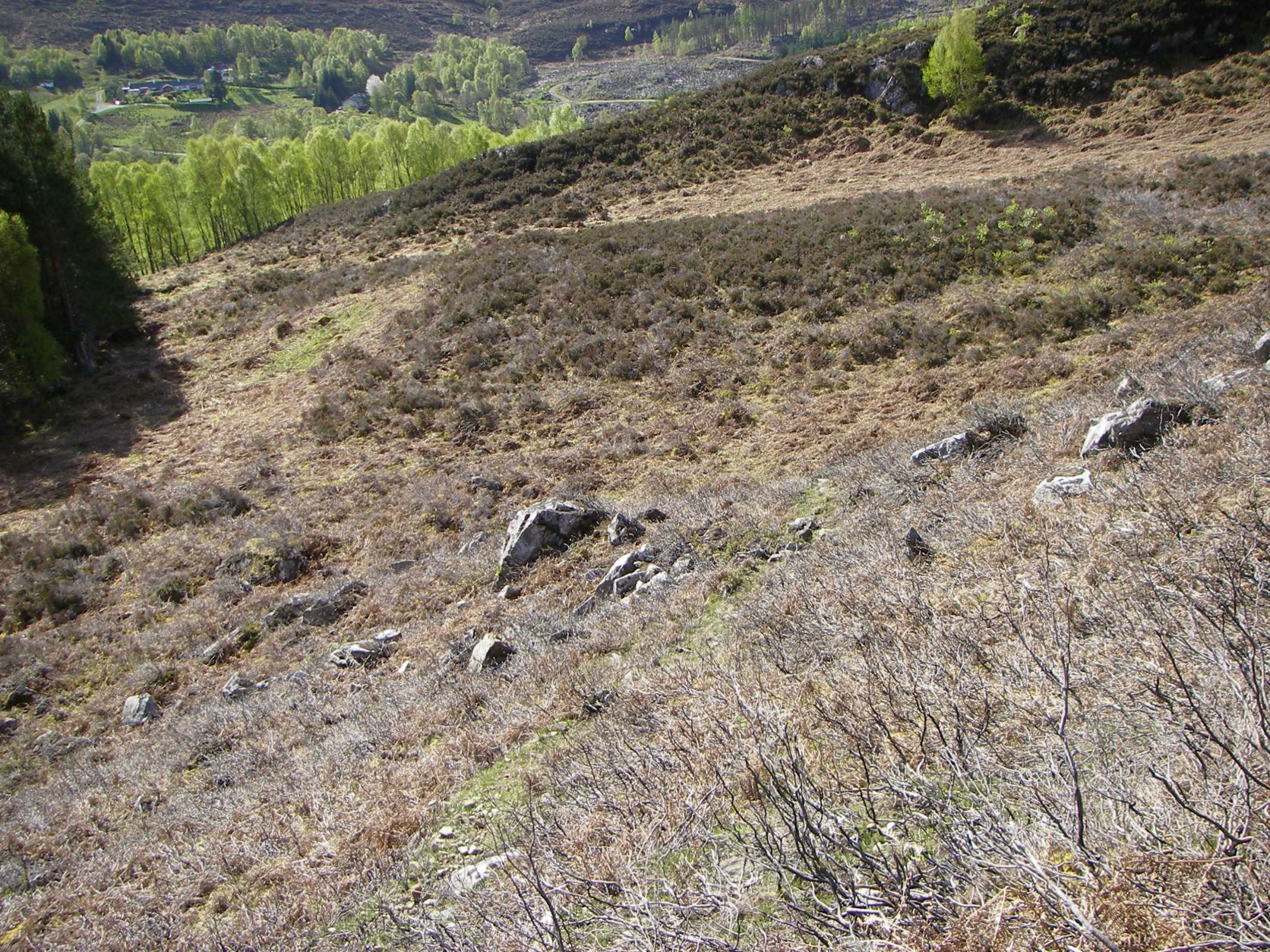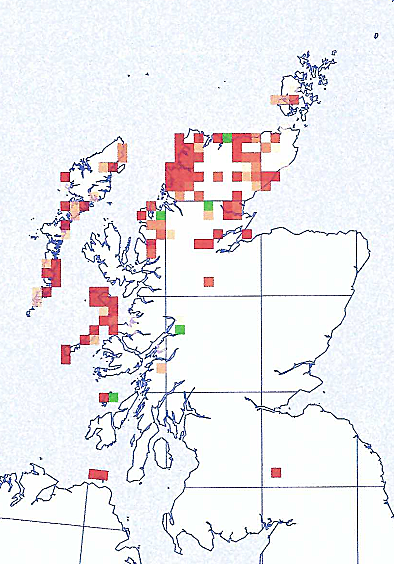This is an attractive scarce perennial plant of Northern Scotland. Pyramidal bugle (Ajuga pyramidalis) is in the family Lamiaceae (old name, Labiatae), the Deadnettle family, and is much less common than Bugle (Ajuga reptans). The other, probably native, British Ajuga species Ajuga chamaepitys (Ground-pine) has not been found in Scotland.

Pyramidal Bugle has the characteristic square stems of this plant family and its leaves are opposite with no stipules. Unlike the commoner Bugle, Pyramidal Bugle does not have stolons and all the bracts are longer than the flowers. Ajuga pyramidalis stems are hairy all round as opposed to Ajuga reptans where the stems are only hairy on two sides. The 2-lipped flowers are deep blue and the lip provides a landing place for pollinating insects. The leaves are usually crenated and hairy and the plant tends to taper towards the top.
The seeds are thought to be relatively long-lived. Ants may play a major part in seed dispersal.
Pyramidal Bugle usually flowers between May and July, but does not always produce flowers. I have seen it flowering profusely after a hillside fire and this has been described elsewhere (Wortham 1994). Its flowers are vulnerable to grazing animals

In Britain Pyramidal Bugle is most abundant in north-west Scotland, but there are sites elsewhere in northern Scotland and a very few locations elsewhere in Britain. It is regarded as being nationally scarce and is considered to be vulnerable in the Red Data Book. It has a scattered distribution elsewhere in Europe, mainly montane, including Norway, Iberia and Central Europe. In Scotland it may be found on south facing slopes, often open, sometimes with broken ground and on a variety of soils, which are often medium base-rich. This species may be found in heathland or grassland, sometimes with rocky areas.
I first saw it at Lochinver on the west coast of Scotland and then on Silver Rock in East Sutherland, but I am mainly acquainted with its Easter Ross sites. I have recorded it in six different 10 kilometre squares in that vice-county and there are also older records from two others. One site by Castlecraig is near the sea, but others are mainly inland, sometimes at intermediate elevation. The rocky hillside of Torr Achilty overlooking Loch Achilty is probably its best-known location in the East Ross. Most sites have been known for some time but one at Torr a Bheadlaidh was a new find, although it has probably been there for a long time, as it is easily overlooked and as most sites have only a few plants. Other locations may await discovery.


Its main centre in Scotland is in West Sutherland, however Evans, Evans and Rothero (2002), reported finding 142 sites in 56 tetrads in Assynt in their flora of that area.
This species does not appear to be under immediate threat, although scrub overgrowth and land management changes may cause problems. As it is a northern species its distribution in Britain may be vulnerable to climate change in the longer term.
Pyramidal Bugle occasionally hybridises with the commoner Bugle when the two grow close together to form Ajuga x pseudopyramidalis. This hybrid was thought to be extinct in Britain but was refound by Dines and Preston at Torr Achilty on 1999 and this was still present there in 2007 when we visited. Since then, it has also been recorded on the island of Eigg. The hybrid has intermediate characteristics, with two stem sides being hairier than the other two.

References
Ballinger C. B. and Ballinger B.R. (2007) “Ajuga x pseudopyramidalis in Easter Ross”. BSBI News 106 p.6
Evans P. A., Evans I. M. and Rothero G.P. (2002) The Flora of Assynt. Privately Published.
Rich T. C. G., Kay G. M. and Sydes C. (1996) “The distribution and Ecology of Pyramidal Bugle in the British Isles”. Botanical Journal of Scotland 51 2 181-193,
Lusby P. and Wright J. (1996) “Scottish Wild Plants”. HMSO Edinburgh,
Wortham P. (1994) in” Scarce Plants in Britain” Eds. Stewart A., Pearman D. A. and Preston C. D. JNCC Peterborough.
©Brian Ballinger